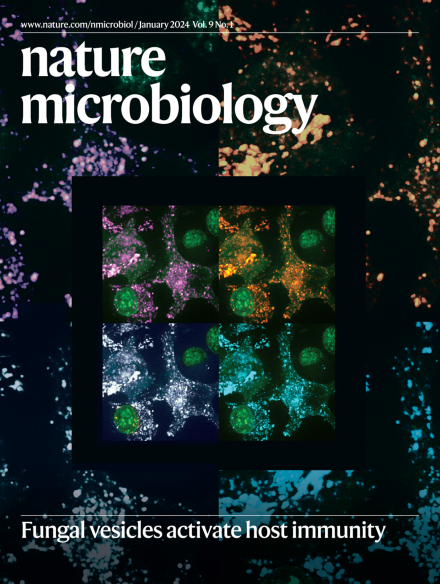Engineered Metarhizium fungi produce longifolene to attract and kill mosquitoes.
IF 19.4
1区 生物学
Q1 MICROBIOLOGY
引用次数: 0
Abstract
Chemical insecticides have been the primary method of mosquito control, but in recent years, mosquitoes have become resistant to these compounds. Metarhizium fungi are emerging as promising alternatives and can kill mosquitoes with a small number of spores. It was previously shown that caterpillars affected by fungal infections can attract mosquitoes. However, the mechanisms and potential applications of this attraction are lacking. Here we show that Metarhizium-colonized insect cadavers release the volatile longifolene to attract and infect healthy insects, facilitating spore dispersal. We identified the responsible odorant receptors in Drosophila melanogaster and Aedes albopictus. The virulent mosquito pathogen Metarhizium pingshaense was engineered to express pine longifolene synthase to produce a large amount of longifolene on media. The transgenic spores effectively attracted and killed male and female A. albopictus, Anopheles sinensis and Culex pipiens. Attraction of wild-caught mosquitoes was not impacted by human presence, but mosquito-attracting flowering plants competed with transgenic M. pingshaense for attractiveness, although mortality remained over 90%. This study uncovered an active spore dispersal mechanism in broad-host-range entomopathogenic Metarhizium, enhancing mosquito control efficacy.经过改造的绿僵菌真菌产生长叶烯来吸引和杀死蚊子。
化学杀虫剂一直是控制蚊子的主要方法,但近年来,蚊子对这些化合物产生了抗药性。绿僵菌是一种很有前途的替代品,可以用少量孢子杀死蚊子。以前的研究表明,受真菌感染的毛虫可以吸引蚊子。然而,这种吸引力的机制和潜在的应用是缺乏的。本研究表明,绿僵菌定殖的昆虫尸体释放挥发性长叶烯来吸引和感染健康昆虫,促进孢子的传播。我们鉴定了黑腹果蝇和白纹伊蚊的气味受体。摘要利用平山绿僵菌在培养基上表达松长叶烯合成酶,产生大量的松长叶烯。转基因孢子对白纹伊蚊、中华按蚊和淡库蚊的雌雄均有诱杀作用。野生蚊子的吸引力不受人类存在的影响,但吸引蚊子的开花植物与转基因平山支原体在吸引力方面存在竞争,但死亡率仍在90%以上。本研究揭示了广泛寄主的虫媒病原菌绿僵菌活跃的孢子传播机制,提高了防蚊效果。
本文章由计算机程序翻译,如有差异,请以英文原文为准。
求助全文
约1分钟内获得全文
求助全文
来源期刊

Nature Microbiology
Immunology and Microbiology-Microbiology
CiteScore
44.40
自引率
1.10%
发文量
226
期刊介绍:
Nature Microbiology aims to cover a comprehensive range of topics related to microorganisms. This includes:
Evolution: The journal is interested in exploring the evolutionary aspects of microorganisms. This may include research on their genetic diversity, adaptation, and speciation over time.
Physiology and cell biology: Nature Microbiology seeks to understand the functions and characteristics of microorganisms at the cellular and physiological levels. This may involve studying their metabolism, growth patterns, and cellular processes.
Interactions: The journal focuses on the interactions microorganisms have with each other, as well as their interactions with hosts or the environment. This encompasses investigations into microbial communities, symbiotic relationships, and microbial responses to different environments.
Societal significance: Nature Microbiology recognizes the societal impact of microorganisms and welcomes studies that explore their practical applications. This may include research on microbial diseases, biotechnology, or environmental remediation.
In summary, Nature Microbiology is interested in research related to the evolution, physiology and cell biology of microorganisms, their interactions, and their societal relevance.
 求助内容:
求助内容: 应助结果提醒方式:
应助结果提醒方式:


